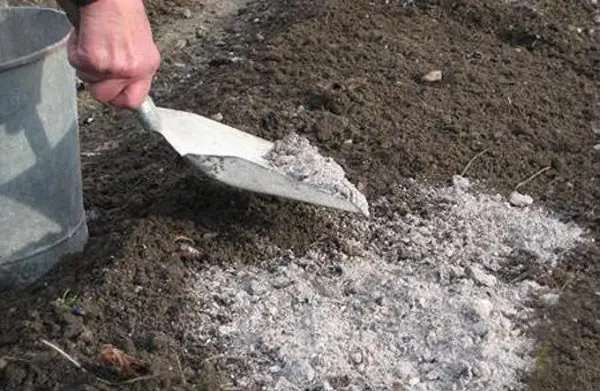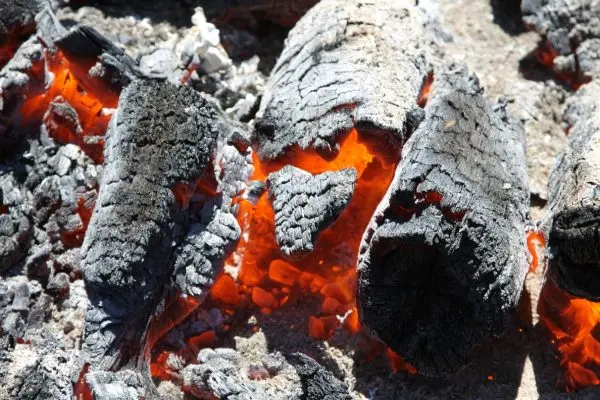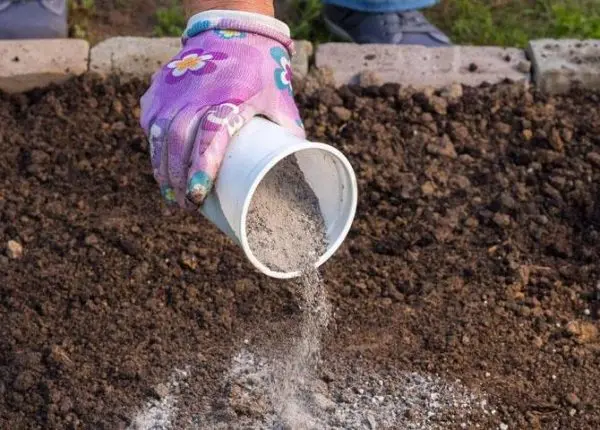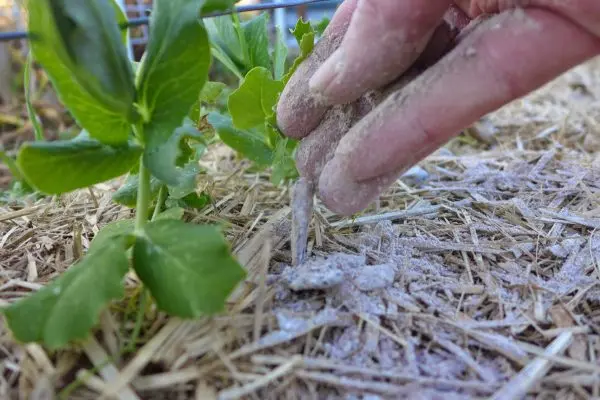Contents
Wood ash as a fertilizer has always been very popular with gardeners and gardeners. This organic matter is a residual product of wood combustion, and contains mineral residues of the most useful elements for plants: potassium, calcium, phosphorus, magnesium, which contribute to the active growth of fruits, vegetables and flowers. Ash can rightfully be considered a complex fertilizer, since, in terms of properties and content of substances, it alone is able to replace any mineral complex mixture.
Composition
It is very difficult to accurately determine the composition of the ash, since it depends on the type of material burned. If the fertilizer is obtained in the process of burning wood and plant residues, then the chemical composition will depend on the type and age of the plant. If coal ash is obtained in the process of burning hard coal, then its composition depends on the type of coal. Also quite valuable fertilizer can be obtained from the burning of organic materials such as peat and shale.
It must be said that peat, shale, and even more so coal ash is rarely used to fertilize plants. Coal ash contains very few nutrients, so its use has only two options – due to its large granules, it is often used as a drainage for flowers, as well as to increase the acidity of alkaline soils. And since the ash obtained from the combustion of wood is considered the most effective fertilizer, its composition will be discussed below.

The formula for wood ash is approximate and may vary slightly depending on the type of wood being burned. 100 g of ash contains the following substances:
- calcium (calcium carbonate – 17 g, silicate – 16,5, sulfate – 14 g and chloride 12 g);
- potassium orthophosphate (salts of potassium and orthophosphoric acid) – 13 g;
- magnesium (magnesium carbonate – 4 g; silicate – 4 g, sulfate – 4 g);
- sodium orthophosphate – 15 g;
- sodium chloride – 0,5 g;
- phosphorus – 4-6 g;
- manganese, iron, molybdenum, boron, and sulfur are also present in small amounts.
Although ash belongs to potash fertilizers, the formula shows that calcium still predominates in it, and in the form of four compounds at once. Such a fertilizer is useful for garden plants, especially seedlings at the initial stage of growth, during the formation of green mass.

There is no nitrogen in wood ash – it volatilizes during the combustion process. But, if we compare ash with mineral mixtures, then its indisputable advantage is the absence of chlorine, which does not have the best effect on plant growth. As for indoor flowers, vegetable ash is the best fertilizer for them. It turns out such a fertilizer in the process of burning dry grass, hay, tops of garden crops. Vegetable ash contains more potassium (up to 30%), calcium 15%, and phosphorus (about 8%).
Video “Wood ash, use for soil”
Demonstrative video with a lot of useful information about ash.
When to Use and When to Use
Wood ash as a fertilizer is suitable for almost any soil. Moreover, it is able to neutralize the soil of medium and high acidity, and simply saturates the neutral soil with calcium, potassium, phosphorus and many other useful elements. A product is used to fertilize any flowers, as well as the following garden crops:
- zucchini, pumpkins, squash, cucumbers – these vegetables are fed three times per season: when digging a plot, 1 glass / sq. m, before planting seedlings – 1-2 cups / hole, in the middle of the growing season when watering – 1 cup / sq. m,;
- eggplants, tomatoes, peppers are fed twice: during digging, 3 cups / sq. m, and 0,5 cups / hole when planting seedlings;

- for feeding cabbage, rutabaga, fertilizer is used twice: a handful / hole when planting, and for spraying when plants reach 3-4 leaves;
- under winter garlic and onions, ash is applied in the fall when preparing the site 2 cups / sq. m;
- before planting legumes and greens, fertilizer is applied to the soil when digging at the rate of 1 glass / sq. m;
- for root crops (celery, beets, carrots), top dressing is applied once when digging 1 cup / sq. m;
- potatoes are fertilized three times over the entire period: 1 glass / sq. m when preparing the site for sowing, 3 tbsp. spoons / hole during the planting of tubers, and when hilling with watering 1-2 cups / bush;
- for garden flowers, fertilizer is applied at 1 glass / sq. m when preparing the site, and 1 glass per hole when planting plants;
- for indoor plants – periodically applied when watering at the rate of 3 tbsp. spoons/glass of water.

Ash is also a good top dressing for fruit and berry crops. When planting young seedlings, fertilizer is introduced into the planting hole and mixed with the soil. For berry bushes, it is useful to water with a solution of ash at the rate of 200 g / bucket of water.
For adult fruit trees (pears, apples, cherries, plums), top dressing is applied once / 3 years in liquid form in the circumferential circles. Ash is an excellent way to control pests in the soil and garden crops. Slugs, snails, ants and other living creatures that inhabit the ground do not like him. To get rid of pests, the ashes are scattered around the plants that they have chosen. In addition to invaluable benefits, ash in some cases can be harmful:
- fertilizer of such flowers as azaleas, rhododendrons, camellias is not recommended – plants stop their growth and flowering;
- ash should not be applied under blueberries, cranberries, lingonberries – these berries love acidic soil, and the ashes neutralize the acidity of the soil;
- radishes, radishes, turnips react poorly to top dressing – plants quickly release an arrow, and the underground part stops growing;

- it is impossible to apply ash with an excess of calcium in the soil – the following signs may indicate an excess of the element: the death of shoots in vegetable crops (tomatoes, cucumbers), increased leaf growth in grapes, whitish spots and discoloration of leaves in garden roses;
- also, fertilizer should not be applied with an excess of potassium – this is evidenced by the bitter taste and uneven surface of the fruit, the falling leaves of indoor flowers.
How to use
As a top dressing, ash is used in the following ways:
Dry. This method is used when digging a site for planting, and directly during planting. When planting ashes in the ground, you need to be careful: so that the roots of young seedlings do not get burned, it is better to mix the fertilizer with the soil. Also, do not use a dry agent for plants that have not reached 3-4 true leaves. Mature fruit trees can be fertilized with dry ash without fear. It is poured into specially dug recesses along the perimeter of the crown and covered with earth. To feed one tree, about 2 kg of dry fertilizer is needed.

in the form of an aqueous solution. This method is used for watering crops during the growing season. The solution is prepared at the rate of 150-200 g of ash / bucket of water. The product needs to be insisted a little, and immediately before watering, stir well until completely dissolved. A liquid solution is best suited for watering flowers, berry bushes and vegetable gardens. Liquid top dressing is carried out 1 time / 14 days.
To enhance efficiency, peat or humus can be added to the solution in a ratio of 1: 4. It is important to know that bird droppings, manure, and mineral nitrogen-containing fertilizer cannot be used simultaneously with ash. This is due to the fact that calcium, contained in large quantities in the ashes, absorbs nitrogen released from the above top dressings. If it is necessary to use both types of fertilizers, it is better to apply nitrogen-containing dressings (manure, litter, saltpeter) in the fall, and ash in the spring. For watering flowers, it is not advisable to use solutions containing humus – indoor and garden flowers respond better to mineral mixtures, and organic fertilizer is more suitable for garden and horticultural crops.

Video “Features of the use of ash»
Informative video with recommendations on the use of fertilizer.
Author: Svetlana Galitsina
Loading…









